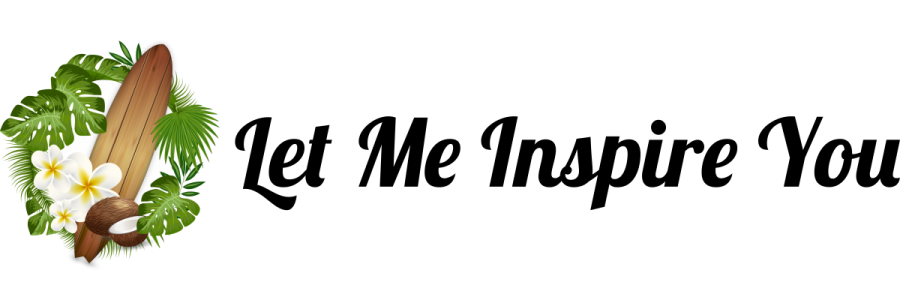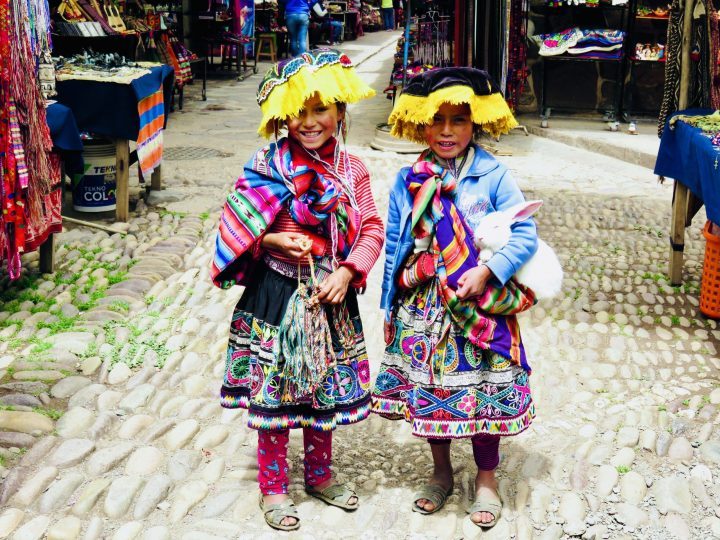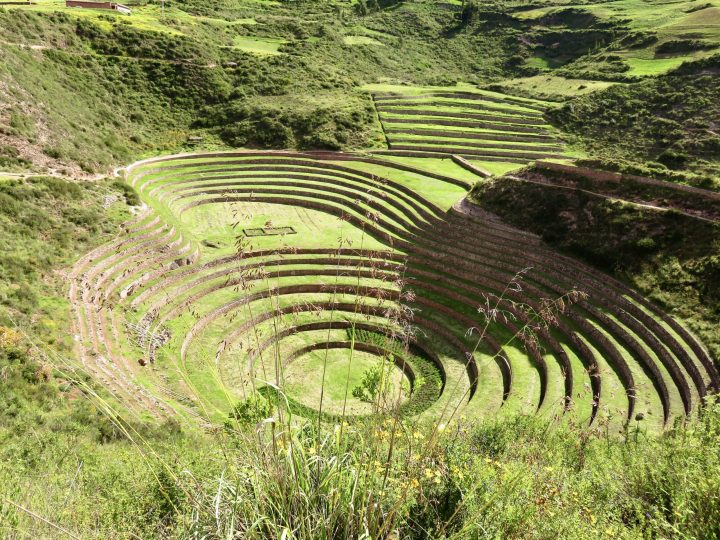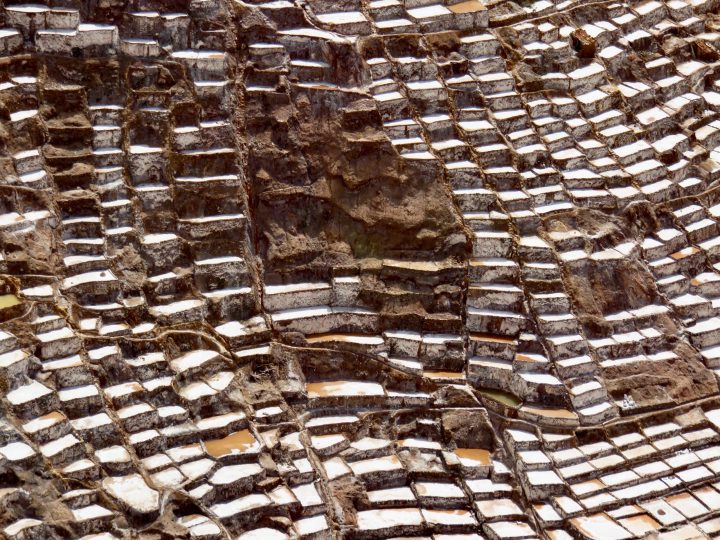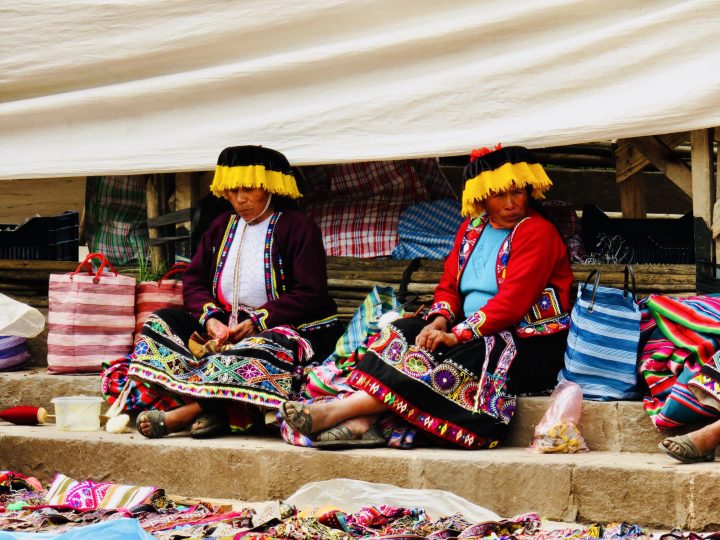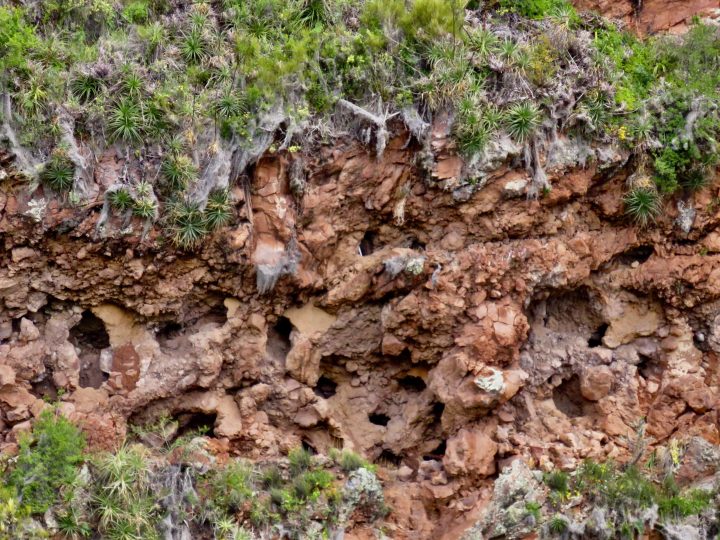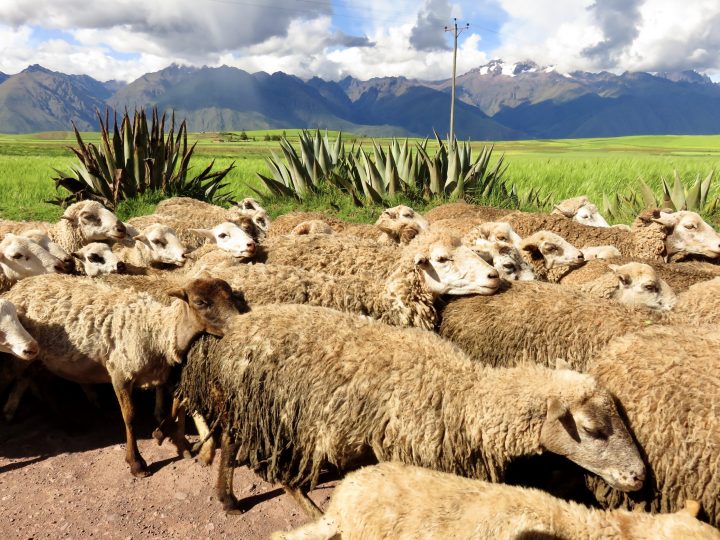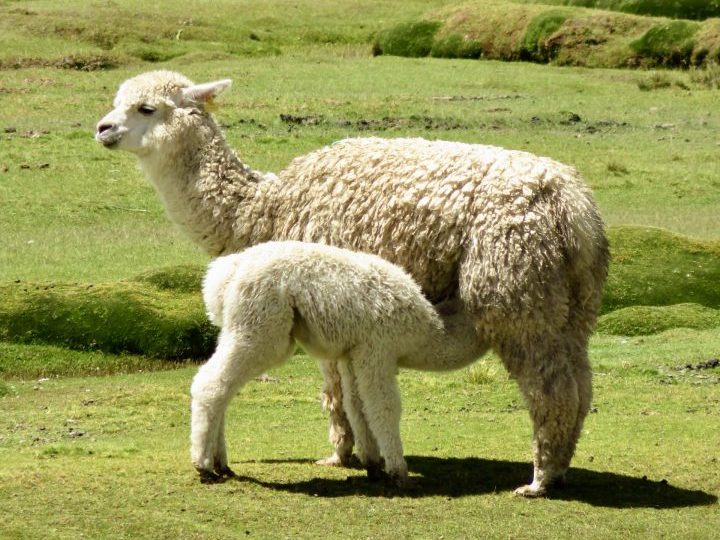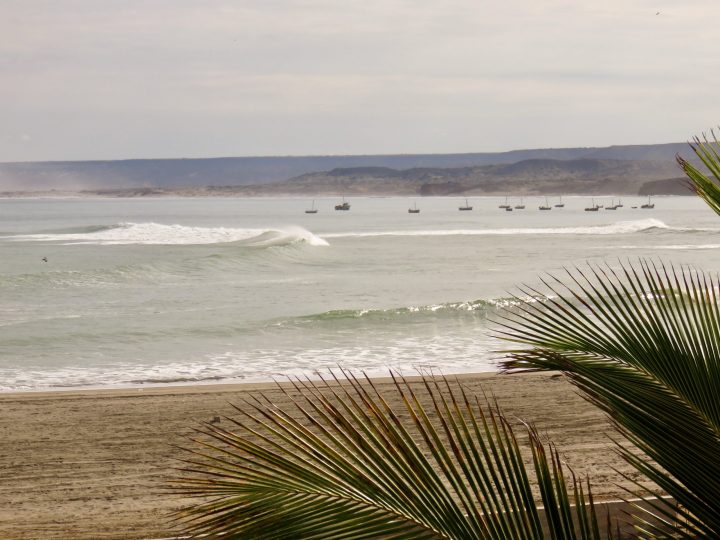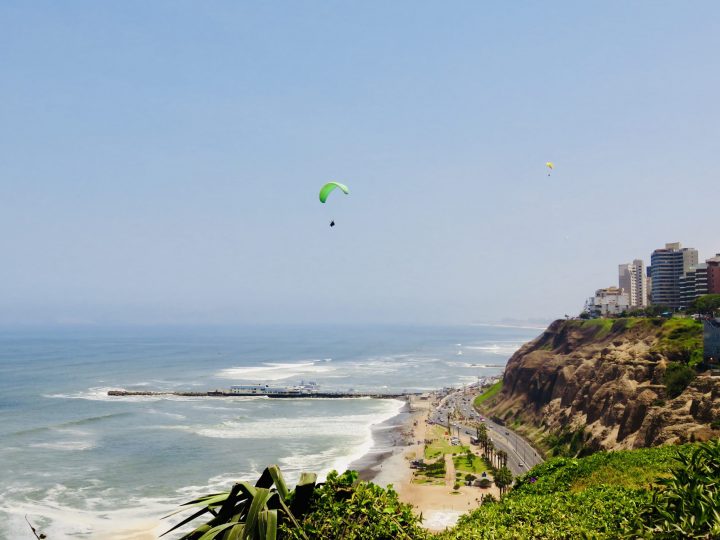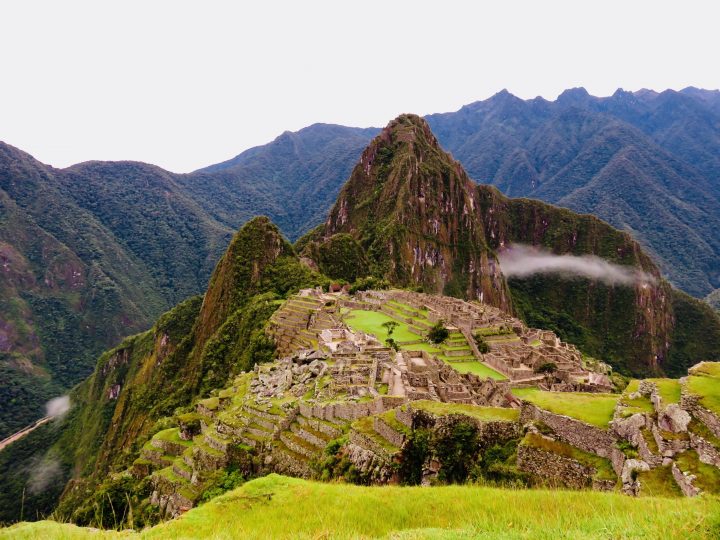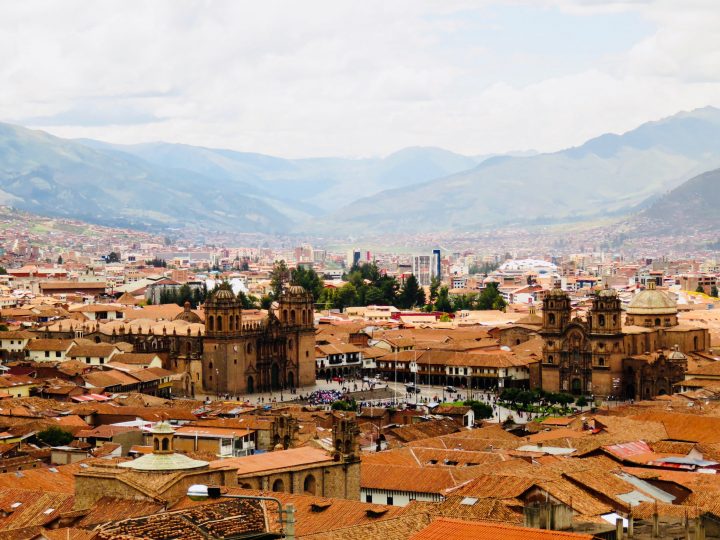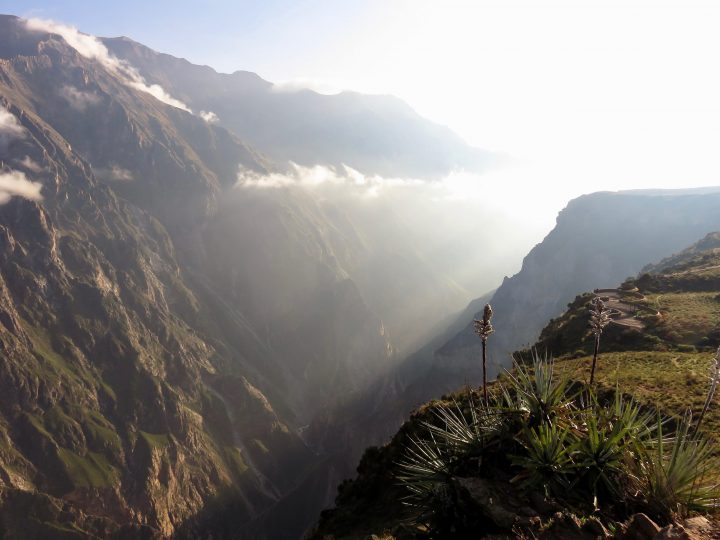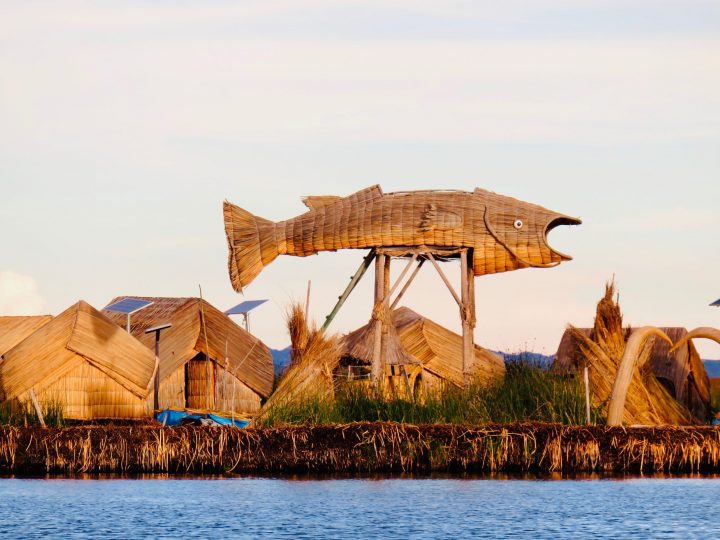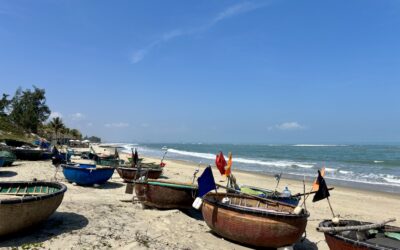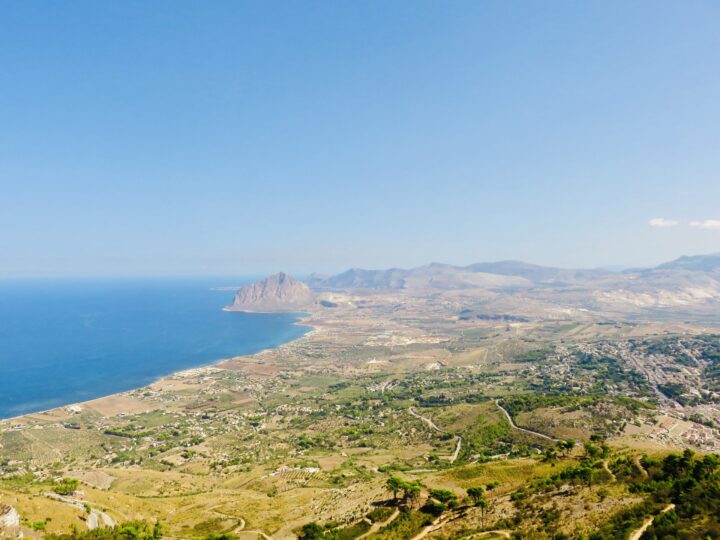The Sacred Valley of the Incas or the Urubamba Valley is a valley in the Andes of Peru; 20 km north of the Inca capital of Cusco. In this valley you can find other archaeological sites and villages next to the most known site Machu Picchu. The Sacred valley is very fertile and irrigated by the Urubamba River. Several civilization lived in his valley over the years leaving the history and the stories behind in this beautiful area of Peru. I found it very relaxing between the mountains, with the green hills, colorful women and great food. The Sacred Valley is a perfect stop after visiting Machu Picchu and before heading back to Cusco to continue your journey onwards.
Transport to and from Cusco
I arrived with the Perurail from Machu Picchu in Ollantaytambo. The hotel picked me up at the station to my hotel; transport is easy in Peru. Transport between the villages in the Sacred Valley are easy to do by local bus. From my hotel in Urubamba I took a taxi to the bus station (10S) where I took the bus to Pisac for 3S (±1.5 hours).
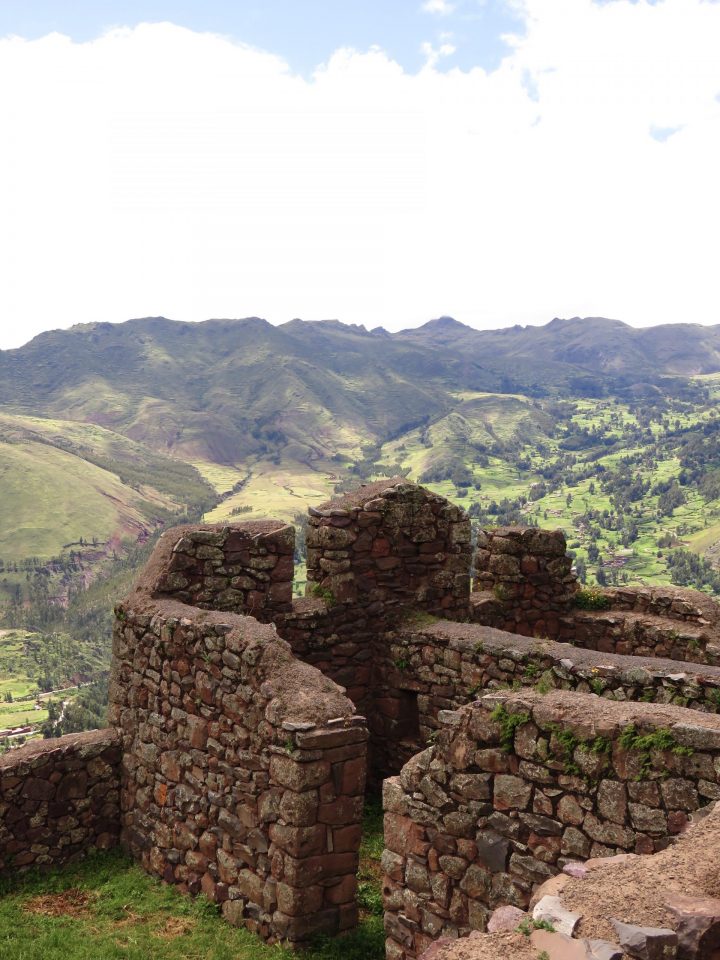 From Pisac to Cusco I used a collectivo for only 5S, but this was not a legitimate driver. This means that we had to do a detour via a very off the beaten track route back to Cusco, due to some police checks. This was exited and nice at the same time, the route was amazing but it was but not the fastest way.
From Pisac to Cusco I used a collectivo for only 5S, but this was not a legitimate driver. This means that we had to do a detour via a very off the beaten track route back to Cusco, due to some police checks. This was exited and nice at the same time, the route was amazing but it was but not the fastest way.
 I booked a private driver to bring me to both the Moray and Salinas de Maras in one afternoon (80S) and I did the same for the tour to the Pisac Inca Ruins (40S). I know this is more expensive than buses or organized tours, but it is efficient and saves time.
I booked a private driver to bring me to both the Moray and Salinas de Maras in one afternoon (80S) and I did the same for the tour to the Pisac Inca Ruins (40S). I know this is more expensive than buses or organized tours, but it is efficient and saves time.
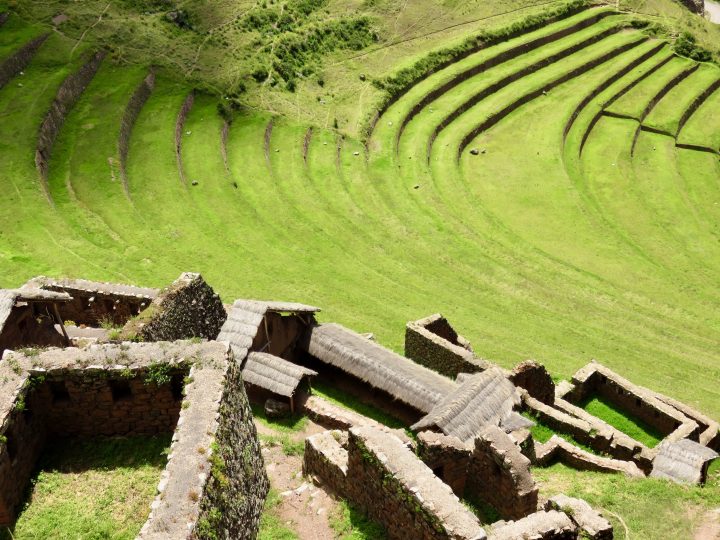 Places to visit and do in the Sacred Valley
Places to visit and do in the Sacred Valley
I booked two nights in this Sacred Valley and that was long enough to see the highlights in this area next to Cusco and Machu Picchu. See below some tips and inspirations:
1. Urubamba Kids Foundation
I booked a special place in Urubamba which is called: Las Casitas del Arco Iris. By staying at one of the 8 bungalows, you are helping to create a better future for the communities of the Sacred Valley. They donate their profits to the Niños del Arco Iris Foundation which provides education and health services to more than 160 children from the Sacred Valley and their families.
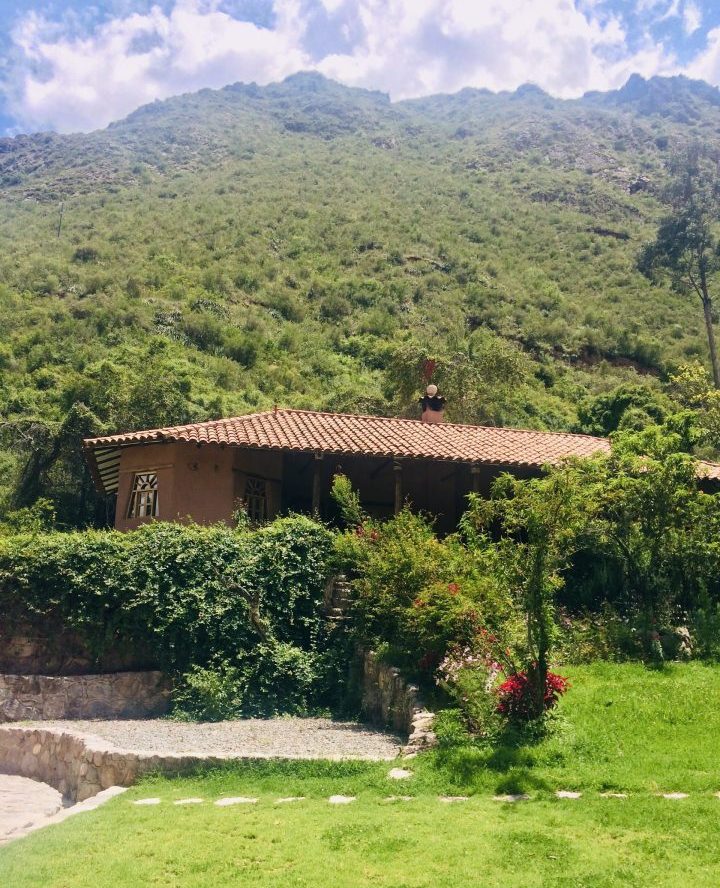 This is a similar project like in Cusco with the Niños Hotel. This project is located in the middle of nowhere and I visited the place on a Saturday while unfortunately the school was closed. The kids project is big, with a lot of practical places like a computer room and even have a dentist and doctor. The bungalow is very luxurious with a nice garden where I could relax after my Machu Picchu experience yesterday.
This is a similar project like in Cusco with the Niños Hotel. This project is located in the middle of nowhere and I visited the place on a Saturday while unfortunately the school was closed. The kids project is big, with a lot of practical places like a computer room and even have a dentist and doctor. The bungalow is very luxurious with a nice garden where I could relax after my Machu Picchu experience yesterday.
 In the afternoon I walked all the way to Urubamba (30 minutes with muscle pain from yesterday) to have lunch at El Huacatay. It is a small restaurant hide away in a narrow street in Urubamba, which has gradually become one of the most creative kitchens in the region. I loved this place, the food here in Peru is so healthy and tasty; I had a delicious vegetable curry in the nice garden!
In the afternoon I walked all the way to Urubamba (30 minutes with muscle pain from yesterday) to have lunch at El Huacatay. It is a small restaurant hide away in a narrow street in Urubamba, which has gradually become one of the most creative kitchens in the region. I loved this place, the food here in Peru is so healthy and tasty; I had a delicious vegetable curry in the nice garden!
2. Moray Inca Ruins
Like I wrote in the Cusco blog, I recommend you to buy the Boleto Turístico del Cusco for 130S. With this ticket you can enter this Moray Inca Ruin too. Moray is a deep shaped circle that’s looks like a theater. The circular shape has stair like terraces with a difference of 30 meters. The purpose behind this structure isn’t fully known yet, they think it was an agricultural laboratory and test environment used by the Incas. The structure generates temperature differences by the wind and the sun, so they could experiment with different crops and micro climates. Clever Incas!
3. Salinas de Maras
Because I didn’t have too much time and wanted to see both Moray and Salinas de Maras at the same day; I booked a private driver that drove me to both place for 80S. Salinas de Maras are salt terraces; please note that the Salina de Maras is not included in the Boleto Turístico. Entrance to Salina of Maras is an extra 10 Soles.
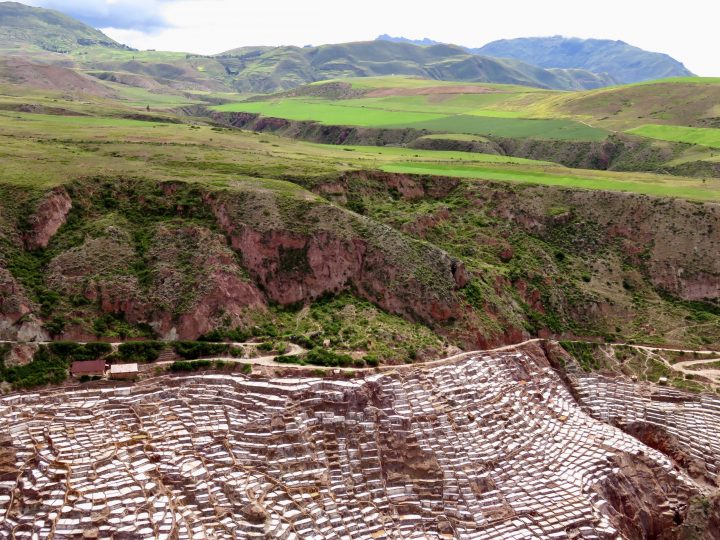 At this amazing site, you can see the terraces flood by saline spring water that were built along one side of a narrow valley. The water is sent throughout a network of channels where the water slowly evaporates leaving the salt behind. Salt has been collected from Maras since Pre-Incan times and it is collected by salt miners today. Great to see this fascinating work on the side of the hill and even got the chance to walk through all the salt fields. Next to this the driver pointed out some to the nice views of the sacred valley that day.
At this amazing site, you can see the terraces flood by saline spring water that were built along one side of a narrow valley. The water is sent throughout a network of channels where the water slowly evaporates leaving the salt behind. Salt has been collected from Maras since Pre-Incan times and it is collected by salt miners today. Great to see this fascinating work on the side of the hill and even got the chance to walk through all the salt fields. Next to this the driver pointed out some to the nice views of the sacred valley that day.
4. Pisac Market
The Sunday Pisac Market is the most famous market in the Cusco area. I was lucky, by coincident I was here in Pisac and on a Sunday! On the Sunday market Quenchua communities from the highlands come here to trade their fruit and vegetables. All dressed up in traditional colorful clothing. I loved the setting and vibe of this market and perfect for my souvenirs shopping. The market offer a lot souvenir stalls with, weaving, ponchos, bags, jewelry, ceramics and alpaca products. Check my souvenir blogs.
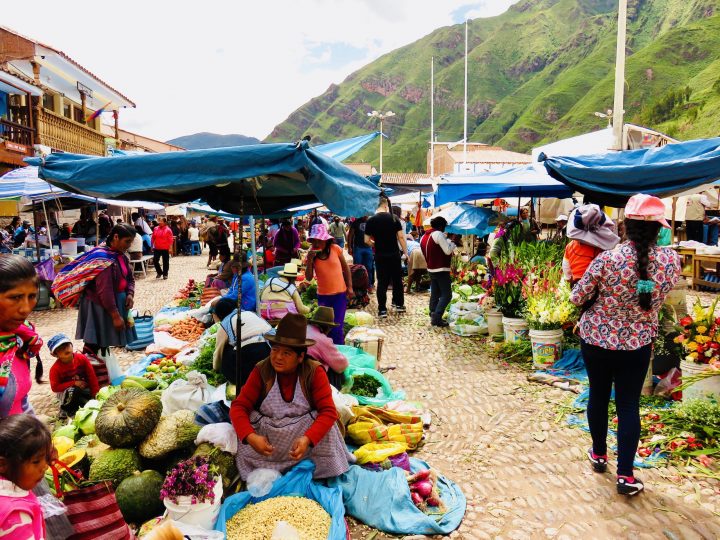
Buy your souvenirs here or in Cusco, don’t wait till Lima or other places. This market is perfect for it.
5. Pisac Inca Ruins
Another Inca Ruin site you can visit with your Boleto Turístico del Cusco (for me this was number 4!) is this one in Pisac. I took a private taxi to the site and return to my guest house in Pisac for 40S; it’s expensive but saving time cost money! The Pisac Inca Ruins are located at the eastern end of the Sacred Valley; opposite of Machu Picchu.
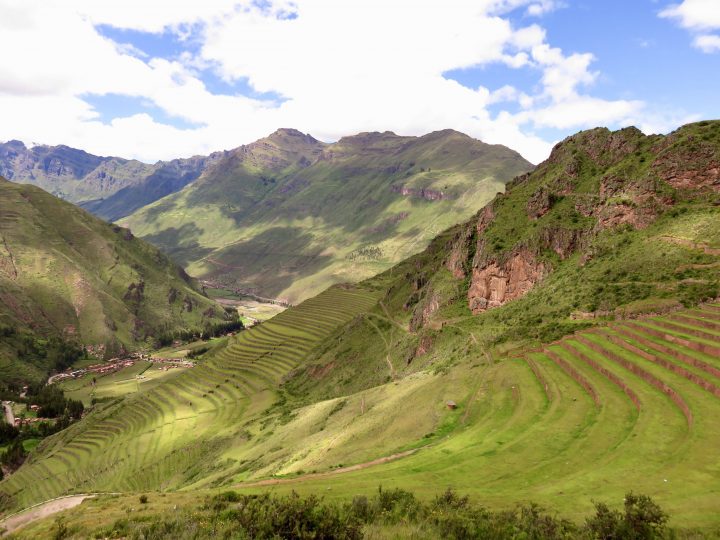 What I found interesting and not had seen at the other Inca ruins were the Inca cemetery; the grave tombs in the holes of the mountains. The mummies were put there in fetus posture with gold and food, this to survive in the afterlife. Nowadays it’s a perfect place for birds and bats. Here you see more of the same Inca terraces and housing; after a 2 hours tour I headed back to Pisac. Now I have seen enough ruins and Inca history, I was ready for the coast! First back to Cusco and then Lima.
What I found interesting and not had seen at the other Inca ruins were the Inca cemetery; the grave tombs in the holes of the mountains. The mummies were put there in fetus posture with gold and food, this to survive in the afterlife. Nowadays it’s a perfect place for birds and bats. Here you see more of the same Inca terraces and housing; after a 2 hours tour I headed back to Pisac. Now I have seen enough ruins and Inca history, I was ready for the coast! First back to Cusco and then Lima.
Where to stay and eat in Pisac
Here in Pisac I found a couple of nice placed to eat; I lot of European foreigners have set up a business here. I booked the Guest House Pisac Inca which was top pick in Lonely Planet (±50S). This small and friendly lodging with colorful quiet rooms have great views on the mountains and is run by two local sisters. My room on the first floor gave me a nice view; the hotel a bit outside the village but only a 7 minutes’ walk.
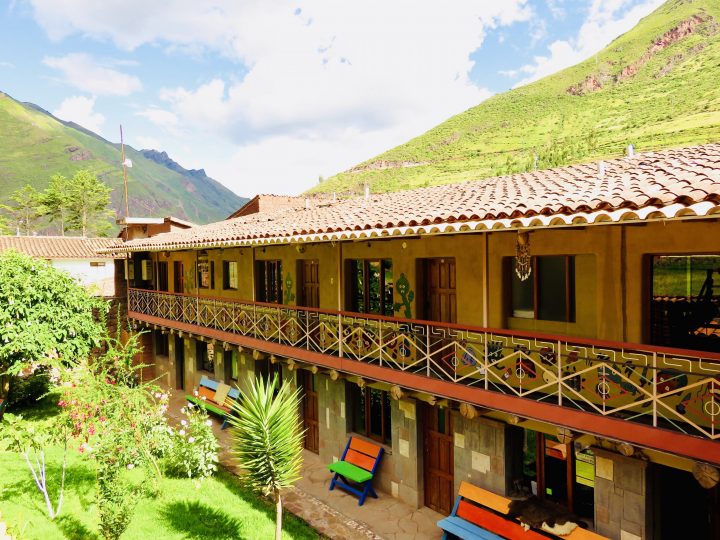
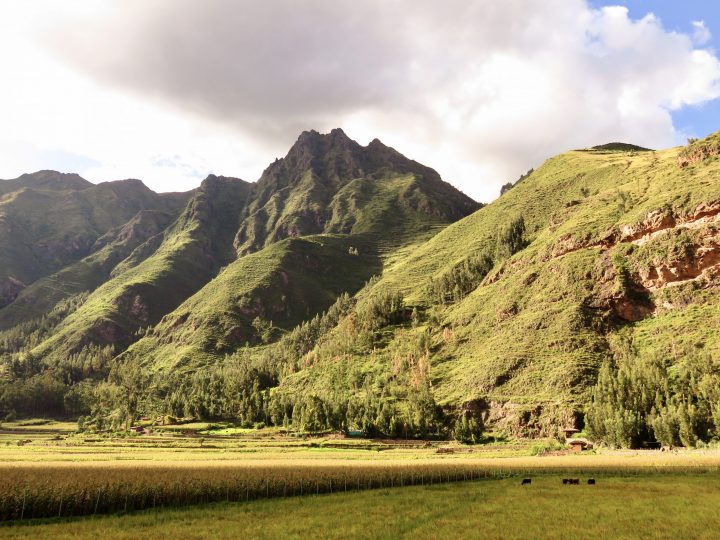 The Ulrike’s Café (but think they are closed now) carrot cake is one to come back for! I loved this coffee place to have a coffee and guacamole for lunch on the outside terrace on the rooftop at Calle Pardo 613.
The Ulrike’s Café (but think they are closed now) carrot cake is one to come back for! I loved this coffee place to have a coffee and guacamole for lunch on the outside terrace on the rooftop at Calle Pardo 613.
The interior of the Blue Llama is stepping into a child’s dream which is located at the main square of Pisac. They offer the best breakfast in town with pancakes and good coffee.
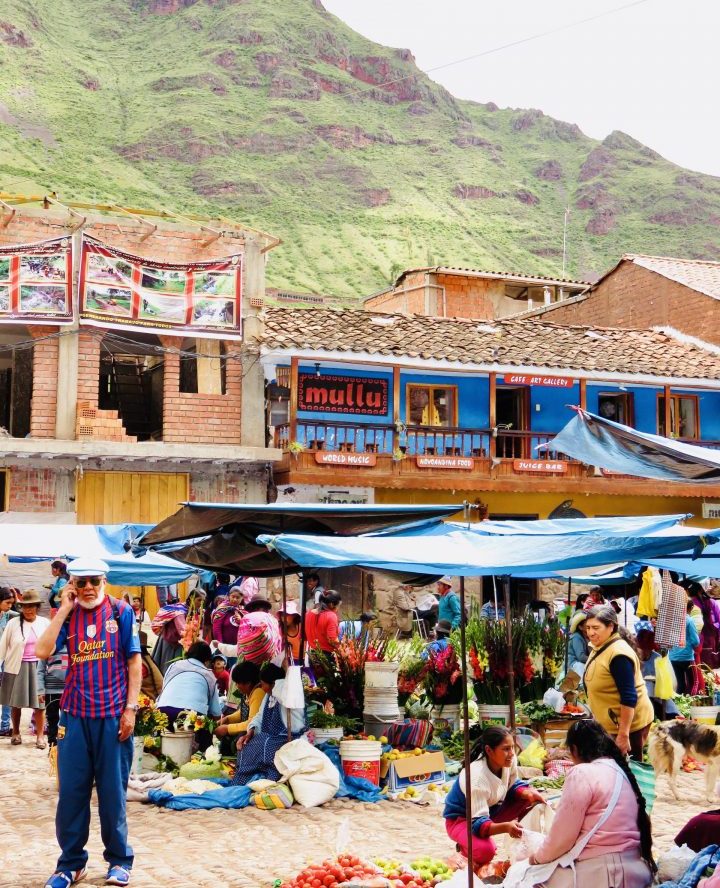 Located at Plaza de Armas is an arty hipster vibe restaurant with a good and fusion menu. I had the Alpaca ravioli with passion fruit sauce. Again, I love the Peruvian food!
Located at Plaza de Armas is an arty hipster vibe restaurant with a good and fusion menu. I had the Alpaca ravioli with passion fruit sauce. Again, I love the Peruvian food!
The jewelry shop from the local artist Calin is creating and selling very nice pieces at his shop AYNI at Calle Manuel Pardo 626. He really makes special things and bought a Inca lookalike necklace. I really recommend you to pay a visit to his jewelry shop.
Back to Cusco and then to Lima, Puno and Lake Titicaca or Arequipa with the Colca Canyon?
